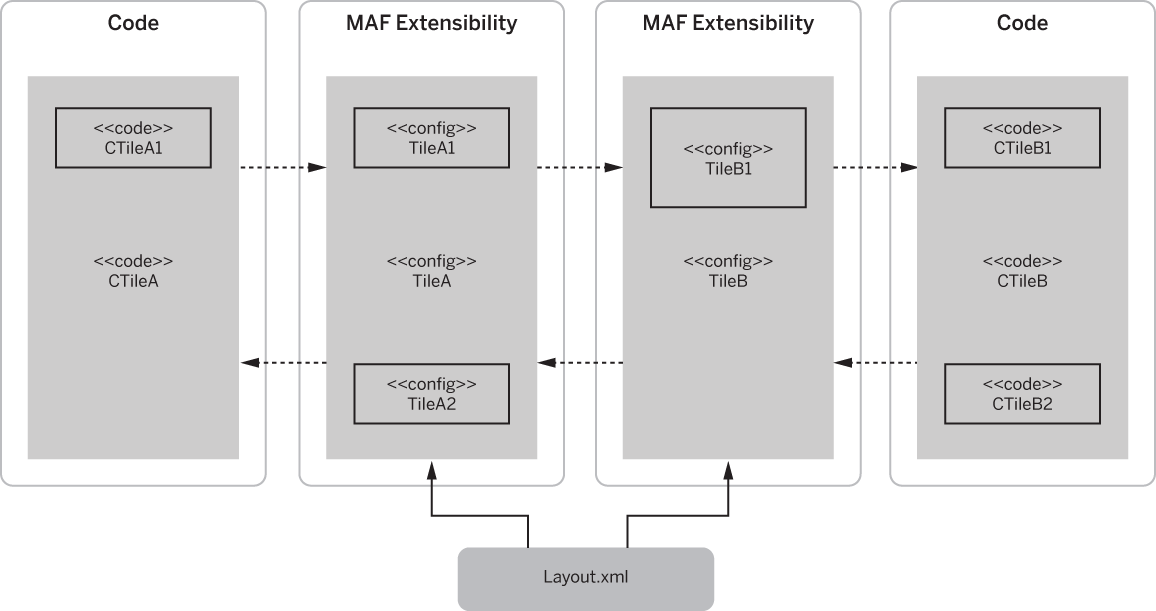With the Extensibility Framework, you can freely combine metadata-driven tiles and native iOS view controllers (also views and controls).
- You can insert coded UIs, and UIs from the layout XML, in the same navigation
chain. The root tile itself (the app’s initial UI) can also be metadata driven.
- You can add a manually coded view to a metadata-driven tile. The subview is
positioned according to the coordinates you provide.
- You can add a metadata-driven subview to a programmatically built UI.
- You can combine configuration-based tiles and subviews, which is a freestyle combination of the above scenarios.
- You can create custom tiles by taking over the creation of specific tiles or tile controllers. The Extensibility Framework notifies the client when a tile is about to be created. To take over the creation of specific tiles, implement and register a MAFTileCreatorDelegate (see Intercepting Tile Creation Events).
- You can customize controller logic by intercepting notifications about data management and action messages sent by the various controls. See Listening for Configuration-Based Control Events and Feeding the Tile with Custom Data.


